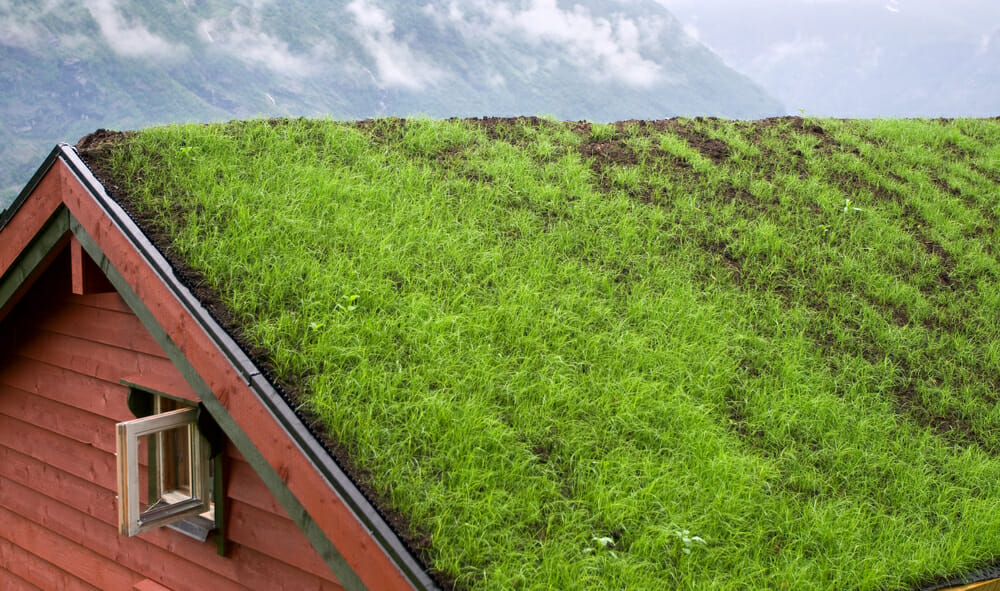Green Roofs: Enhancing Sustainability and Beauty in Rural Living
Introduction:
As the world becomes more conscious of the importance of sustainable living, green roofs have emerged as a popular solution for homeowners. Green roofs, also known as living roofs or eco-roofs, involve covering rooftops with vegetation to provide numerous environmental benefits. In addition to their ecological advantages, green roofs can also enhance the aesthetic appeal of rural homes. In this panel discussion-style post, we will delve into the various aspects of green roofs and explore their impact on rural living and homesteading.
Panelists:
1. Dr. Emily Collins – Ecologist specializing in urban ecosystems
2. Mark Johnson – Sustainable architect with expertise in building design
3. Sarah Thompson – Homesteader focusing on self-sufficiency and natural farming practices
Moderator: Thank you all for joining us today to discuss the role of green roofs in enhancing sustainability and beauty in rural living. Let’s begin by exploring the ecological benefits that green roofs offer.
Dr. Collins: Green roofs provide a multitude of environmental advantages. Firstly, they act as natural insulation for buildings, reducing energy consumption needed for heating and cooling during extreme weather conditions. They also mitigate urban heat island effect by absorbing solar radiation instead of reflecting it back into the atmosphere like traditional roofing materials do.
Mark Johnson: Absolutely! Additionally, green roofs help improve air quality by filtering pollutants from rainwater runoff before it reaches streams or storm drains. They play a crucial role in reducing greenhouse gas emissions while providing habitats for birds, insects, and other wildlife that are vital to maintaining biodiversity within our rural landscapes.
Sarah Thompson: I completely agree with both perspectives shared here so far! As a homesteader focused on self-sufficiency and natural farming practices, I find that incorporating green roofs into my property has been immensely beneficial too. The added insulation helps regulate indoor temperatures throughout different seasons without relying heavily on HVAC systems.
Moderator: That’s fantastic to hear, Sarah. Let’s shift our focus now to the practicality and implementation of green roofs in rural areas.
Mark Johnson: Green roofs can be adapted to various types of structures, including both new constructions and existing buildings. However, it is important to consider structural load capacity and consult professionals during the planning phase. Rural homeowners must also assess the local climate, available sunlight, and water availability before deciding on vegetation options for their green roof.
Dr. Collins: Absolutely! Native plants are usually recommended as they require less maintenance once established while providing essential habitat for local wildlife. It is vital to choose plant species that can withstand extreme weather conditions prevalent in rural areas such as strong winds or droughts.
Sarah Thompson: I have found that incorporating edible plants into my green roof has been a great way to supplement my family’s food production efforts. Herbs like mint and thyme thrive in this environment and provide us with fresh flavors throughout the year.
Moderator: It’s fascinating how green roofs can contribute not only to environmental sustainability but also enhance self-sufficiency within rural living spaces. Now let’s discuss some challenges associated with implementing green roofs in rural settings.
Dr. Collins: One challenge we often encounter is access to professional expertise in rural areas when it comes to designing and implementing green roofs. Many architects or contractors may not be familiar with these specialized techniques or may not have experience working with native plant species suitable for local climates.
Mark Johnson: Yes, that’s a valid concern Dr. Collins! Another challenge relates to water management on green roofs, especially in regions experiencing irregular rainfall patterns common in many rural areas. Implementing rainwater harvesting systems alongside proper irrigation strategies becomes crucial here.
Sarah Thompson: Additionally, maintaining a healthy ecosystem on your rooftop requires regular attention and care such as weed management and monitoring moisture levels during dry spells when natural rainfall might be insufficient.
Moderator: Those are indeed important points to consider. Now, let’s discuss the aesthetic value that green roofs bring to rural homes.
Sarah Thompson: Green roofs add a touch of natural beauty and blend seamlessly with the surrounding landscape. They can transform a traditional roofline into an inviting space for relaxation, gardening, or even beekeeping!
Mark Johnson: I couldn’t agree more! Green roofs offer an opportunity for homeowners to incorporate gardens and green spaces into their properties, providing a unique sense of serenity and harmony with nature.
Dr. Collins: Absolutely! The visual appeal of green roofs extends beyond individual homes; it positively impacts entire communities by creating pockets of biodiversity within otherwise concrete-dominated environments.
Moderator: It’s evident that green roofs have numerous benefits in terms of sustainability, functionality, and aesthetics. Before we conclude this panel discussion, I would like each panelist to share one final thought on the significance of green roofs in rural living.
Dr. Collins: Green roofs are not only an environmentally friendly choice but also contribute towards building resilient communities where humans and wildlife coexist harmoniously.
Mark Johnson: Incorporating green roofing systems allows us to reimagine our built environment as part of a larger ecological framework that prioritizes sustainability at every level.
Sarah Thompson: For homesteaders like me, embracing green roofs is about merging practicality with nature’s beauty while reducing our carbon footprint and nurturing self-sufficiency in rural living spaces.
Moderator: Thank you all for sharing your insights today! It is clear that green roofs have tremendous potential in enhancing sustainability and beauty within rural living environments. We hope this discussion inspires our readers to explore the possibilities of implementing green roofs on their own properties.


Leave a comment